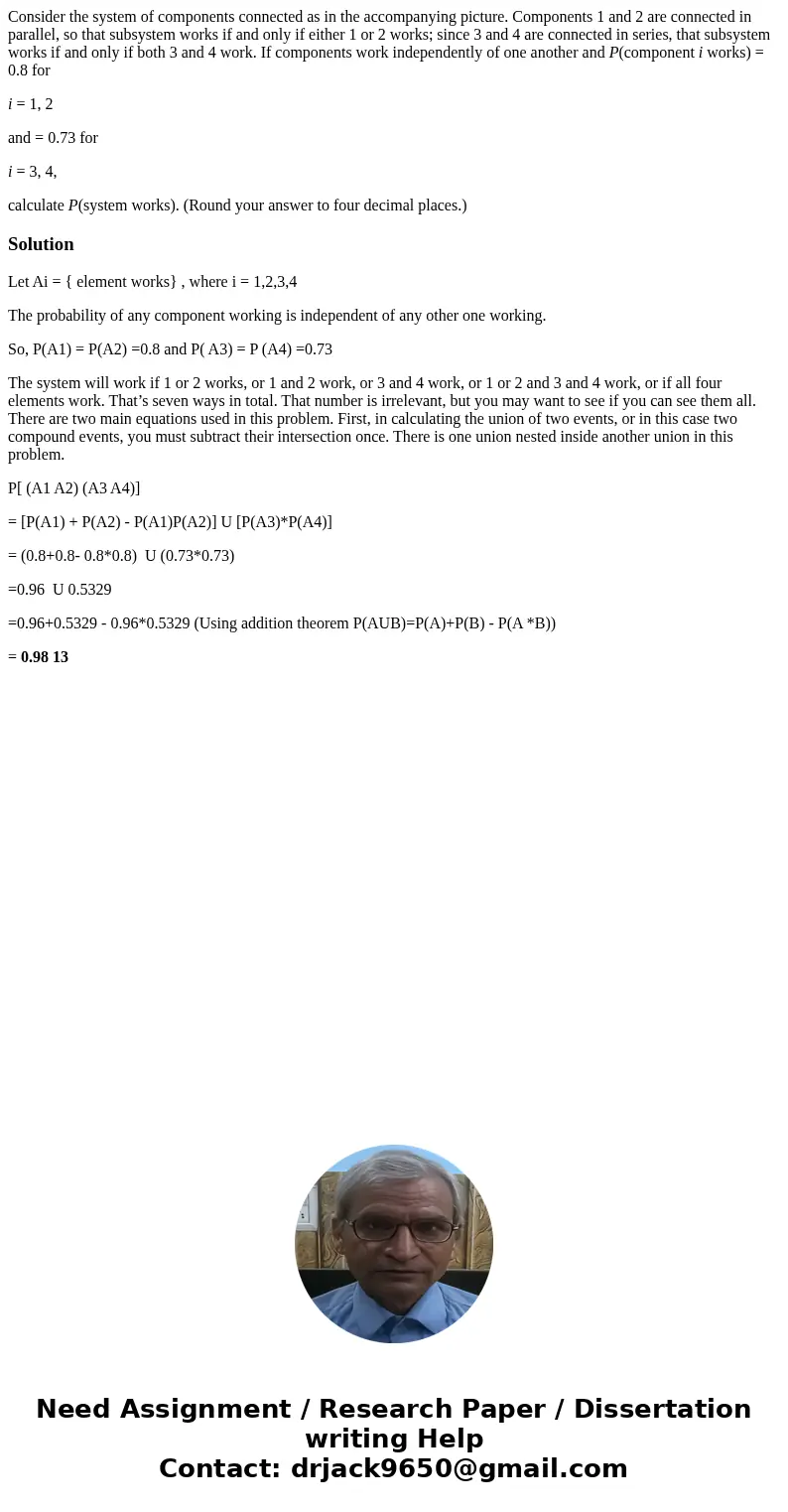Consider the system of components connected as in the accomp
Consider the system of components connected as in the accompanying picture. Components 1 and 2 are connected in parallel, so that subsystem works if and only if either 1 or 2 works; since 3 and 4 are connected in series, that subsystem works if and only if both 3 and 4 work. If components work independently of one another and P(component i works) = 0.8 for
i = 1, 2
and = 0.73 for
i = 3, 4,
calculate P(system works). (Round your answer to four decimal places.)
Solution
Let Ai = { element works} , where i = 1,2,3,4
The probability of any component working is independent of any other one working.
So, P(A1) = P(A2) =0.8 and P( A3) = P (A4) =0.73
The system will work if 1 or 2 works, or 1 and 2 work, or 3 and 4 work, or 1 or 2 and 3 and 4 work, or if all four elements work. That’s seven ways in total. That number is irrelevant, but you may want to see if you can see them all. There are two main equations used in this problem. First, in calculating the union of two events, or in this case two compound events, you must subtract their intersection once. There is one union nested inside another union in this problem.
P[ (A1 A2) (A3 A4)]
= [P(A1) + P(A2) - P(A1)P(A2)] U [P(A3)*P(A4)]
= (0.8+0.8- 0.8*0.8) U (0.73*0.73)
=0.96 U 0.5329
=0.96+0.5329 - 0.96*0.5329 (Using addition theorem P(AUB)=P(A)+P(B) - P(A *B))
= 0.98 13

 Homework Sourse
Homework Sourse